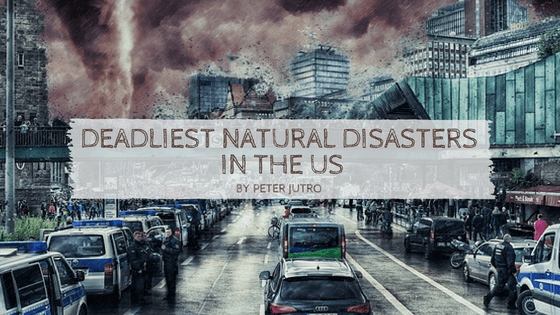Winds that shred houses to splinters, floods that destroy a city, clouds of crop-choking dust that circulate for years, tremors that topple skyscrapers and split the earth miles deep: these events–and the thousands of lives torn apart in their wake—have been some of America’s deadliest natural disasters. The US incurred $306 billion in damages from natural disasters last year alone, but catastrophe has plagued our country from its start. The following are a few of the worst calamities to ever strike America.
The Southern plains from Texas to Nebraska were fertile and vibrant with crops, until a decade-long drought dehydrated a layer of topsoil compromised by poor agricultural practices. This, combined with high winds, whipped up massive dust clouds that blackened the sky across an area almost the size of Texas. With their land and livelihood eroded, 2.5 million farmers had no choice but to abandon their farms in the largest single migration in US history.
The 1906 San Francisco Earthquake
The quake itself lasted no more than a minute, but its devastation continued for days, eventually obliterating over 80% of San Francisco. Buildings were sent crashing and gas pipes shattered, causing 30 fires to erupt. The leaking gas quickly ignited into a fire that raged untamed, as many water mains supplying the city’s fire hydrants had broken as well. For four days, the ensuing inferno coursed nonstop across the cityscape. By the time the blaze was quelled, 225,000 were left homeless, 3,000 to 6,000 laid dead in the streets, and most of the city had been destroyed.
On October 8, 1871–as the city of Chicago burned — flames also engulfed the small town of Peshtigo, Wisconsin. While the Great Chicago Fire has received far more attention over the years, its death toll was actually 5 to 8 times less than Peshtigo, the single deadliest wildfire in US history. The Peshtigo fire is believed to have claimed as many as 2,500 lives, and reduced to ash an area 50% larger than Rhode Island.
On an island off the Gulf Coast sat the so-called “Jewel of Texas”: a thriving hub of the cotton trade, and one of Texas’s most prosperous cities. Galveston had a history of weathering severe storms. Its resident’s sense of invulnerability in the face of nature led them to reject a proposal to build a seawall for stopping hurricane waves. This unfortunate choice left them vulnerable and unprepared for America’s deadliest natural disaster. On September 8, 1900, 135 mph winds howled through the town, carrying 15-foot swells in a storm surge of unprecedented chaos. The entire island was submerged; not one property escaped damage. Most historians place the Galveston death toll at 8,000 out of a total population of 38,000. Almost all of the surviving 30,000 were left homeless. In the aftermath, investors once interested in Galveston set their sights instead on Houston. The city eventually rebuilt, but never regained its former opulence. John Coulter’s 1900 book about the disaster named it aptly, calling it “The Galveston Horror”.

